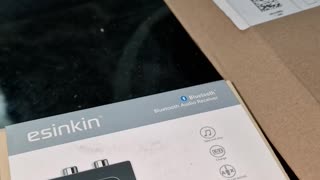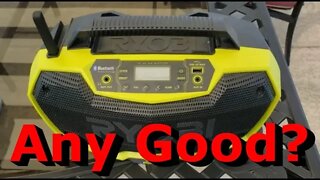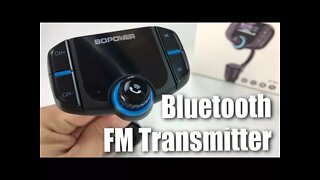#167 Bluetooth
Bluetooth is a wireless technology standard used for exchanging data and connecting devices over short distances. It was developed to replace the need for wired connections between devices like smartphones, computers, headphones, speakers, and other peripherals. Bluetooth technology uses radio waves operating in the 2.4 GHz ISM (Industrial, Scientific, and Medical) band to establish connections between devices.
Here are some key features and aspects of Bluetooth:
Wireless Connectivity: Bluetooth enables wireless communication between devices within a relatively short range, typically up to 100 meters (depending on the Bluetooth class and version).
Pairing: To establish a Bluetooth connection, devices need to be paired. This involves a one-time setup where the devices exchange encryption keys, ensuring secure communication. Once paired, devices can connect automatically when in proximity and their Bluetooth radios are active.
Versions and Standards: Bluetooth technology has evolved over the years, with each version improving on the previous one. The most recent versions include Bluetooth 5.2 and Bluetooth LE (Low Energy). Bluetooth LE is commonly used for devices with lower power requirements, such as fitness trackers and smartwatches.
Profiles: Bluetooth profiles define the functions and features supported by a device. For example, the A2DP (Advanced Audio Distribution Profile) is used for streaming high-quality audio, while the HFP (Hands-Free Profile) is used for hands-free calling in car kits and headsets.
Applications: Bluetooth is used in various applications, including wireless audio streaming (e.g., Bluetooth headphones and speakers), data transfer between devices (e.g., file sharing between smartphones), connecting peripherals (e.g., Bluetooth mice and keyboards), and the Internet of Things (IoT).
Security: Bluetooth has security features to protect against unauthorized access and eavesdropping. Pairing devices using a secure method ensures data privacy.
Mesh Networking: Bluetooth Mesh is a recent development that allows devices to create a network where each device can communicate with others, extending the range and capabilities of Bluetooth in smart home and industrial applications.
Interference: Bluetooth operates in the 2.4 GHz band, which is shared with other wireless technologies like Wi-Fi. This can lead to interference issues in densely populated areas, but Bluetooth uses adaptive frequency hopping to minimize interference.
Range: The effective range of a Bluetooth connection can vary depending on factors like the Bluetooth class (Class 1 for longer range, Class 2 for standard range, and Class 3 for shorter range), environmental obstacles, and interference.
Power Efficiency: Bluetooth LE is designed for low power consumption, making it suitable for devices powered by batteries, such as wearables and sensors. It enables devices to operate for extended periods without frequent battery replacements.
Bluetooth technology has become an integral part of modern connectivity, enabling seamless wireless communication between a wide range of devices across various industries. Its versatility and evolving standards continue to drive innovation in the world of wireless technology.
www.antharas.co.uk/ companies website or top book distributors!
#BusinessStrategy
#Entrepreneurship
#Leadership
#Management
#Marketing
#Finance
#Startups
#Innovation
#Sales
#SmallBusiness
#CorporateCulture
#Productivity
#SelfDevelopment
#SuccessStories
#PersonalBranding
#Networking
#Negotiation
#BusinessEthics
#TimeManagement
#GrowthStrategies
#MarketAnalysis
#BusinessPlanning
#FinancialManagement
#HumanResources
#CustomerExperience
#DigitalTransformation
#Ecommerce
#SocialMediaMarketing
#BusinessCommunication
#ChangeManagement
-
 0:43
0:43
publizero
1 year agoBluetooth receiver
33 -
 18:33
18:33
No fake news
1 year agoBluetooth
15 -
 6:24
6:24
SeidelRanch
3 years agoRYOBI 18v ONE+ Hybrid Bluetooth Radio
23 -
 12:03
12:03
Watchman's Duty
1 year agobluetooth signals in graveyards
17.4K89 -
 21:34
21:34
Riharz
11 months agoHow do Bluetooth work?
1 -
 1:49
1:49
Peter von Panda
5 years agoHow to Bluetooth stream any audio from your iPhone to your car
54 -
 4:01
4:01
StoriesnKnowledge
1 year agoBestBluetoothSpeaker
20 -
 9:24
9:24
Peter von Panda
6 years agoBluetooth FM Transmitter for Music and Handsfree Calling by Bopower ABOX Review
38 -
 5:23
5:23
ALLCHECKOUT
2 years ago $0.05 earnedBluetooth Troubleshooter Says "Device Does Not Have Bluetooth" on Windows 10 - Easy Fix
6652 -
 48:39
48:39
Anti-Disinfo League
1 year agoAre YOU Bluetooth enabled?
2781